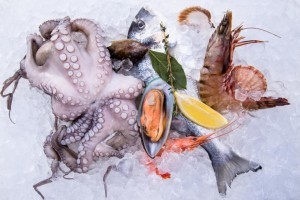
Organic food has become very popular. But navigating the maze of organic food labels, benefits, and claims can be confusing. Is organic food really healthier? Is it more nutritious? What do all the labels mean? Why is it so expensive? This guide can help you make better choices about which organic foods are healthier for you and better for the environment, and how you can afford to incorporate more organic food into your diet. Antibiotic-resistant bacteria are a public health threat that could become worse in the coming years. According to the Infectious Diseases Society of America, these resistant bacteria sicken two million people in the U.S. and kill up to 23,000. Recently, President Barack Obama proposed several steps that the government would take to address the problem — but research still lacks when it comes to seafood.
Animals raised in confined animal feeding operations (CAFOs), such as cattle and chickens, are often fed antibiotics at low doses for growth promotion, and those antibiotics are transferred to you via meat, and even via the manure used as crop fertilizer.
The same problems that are occurring on land are now, tragically, also occurring in the sea, with farmed fish becoming another major outlet for antibiotic usage.
Unlike in land animals, fish are not fed the antibiotics for growth promotion but rather for disease prevention. Industrial fish farming, or aquaculture, is the fastest growing form of food production in the world. About half of the world's seafood now comes from fish farms, including in the US, and this is expected to increase.
Multiple Antibiotics Detected in Shrimp, Salmon, Tilapia, and Trout
In the last two decades, aquaculture production has nearly tripled, and with the rise has come a significant increase in the use of antibiotics. …
The authors examined 27 different seafood samples, including five of the top 10 most consumed seafoods in the U.S.: shrimp, tilapia, catfish, swai, and Atlantic salmon. They discovered the presence of five antibiotics, including oxytetracycline in wild shrimp, farmed tilapia, farmed salmon and farmed trout; 4-epioxytetracycline in salmon; sulfadimethoxine in shrimp; ormetoprim in salmon, and virginiamycin in salmon that had been marketed as antibiotic-free.
While all of the amounts of antibiotics found in the fish complied with FDA regulations, the authors argue that even these relatively low levels can cause damage in the long-term by promoting resistance development. “Proper monitoring of antibiotic residues in seafood is particularly critical, due to the fact that many antibiotics used in aquaculture are also used in human medicine, for example amoxicillin and ampicillin — common therapeutics for the treatment of bacterial infections, including pneumonia and gastroenteritis,” the press release notes.
Please Read this Article at Articles.Mercola.com





Leave a Reply